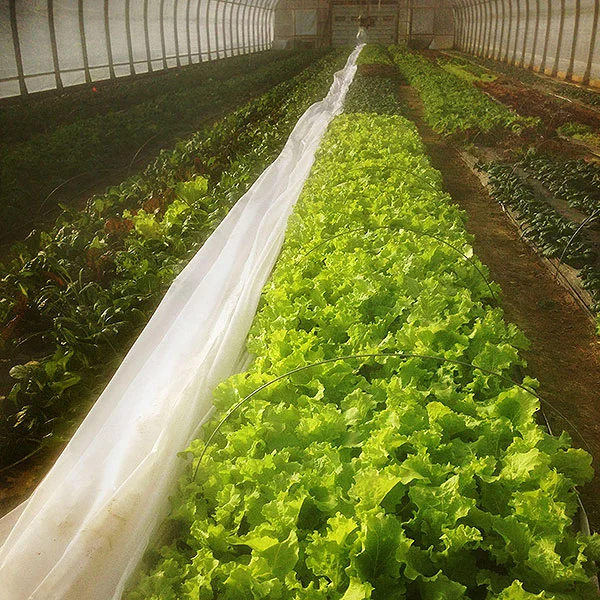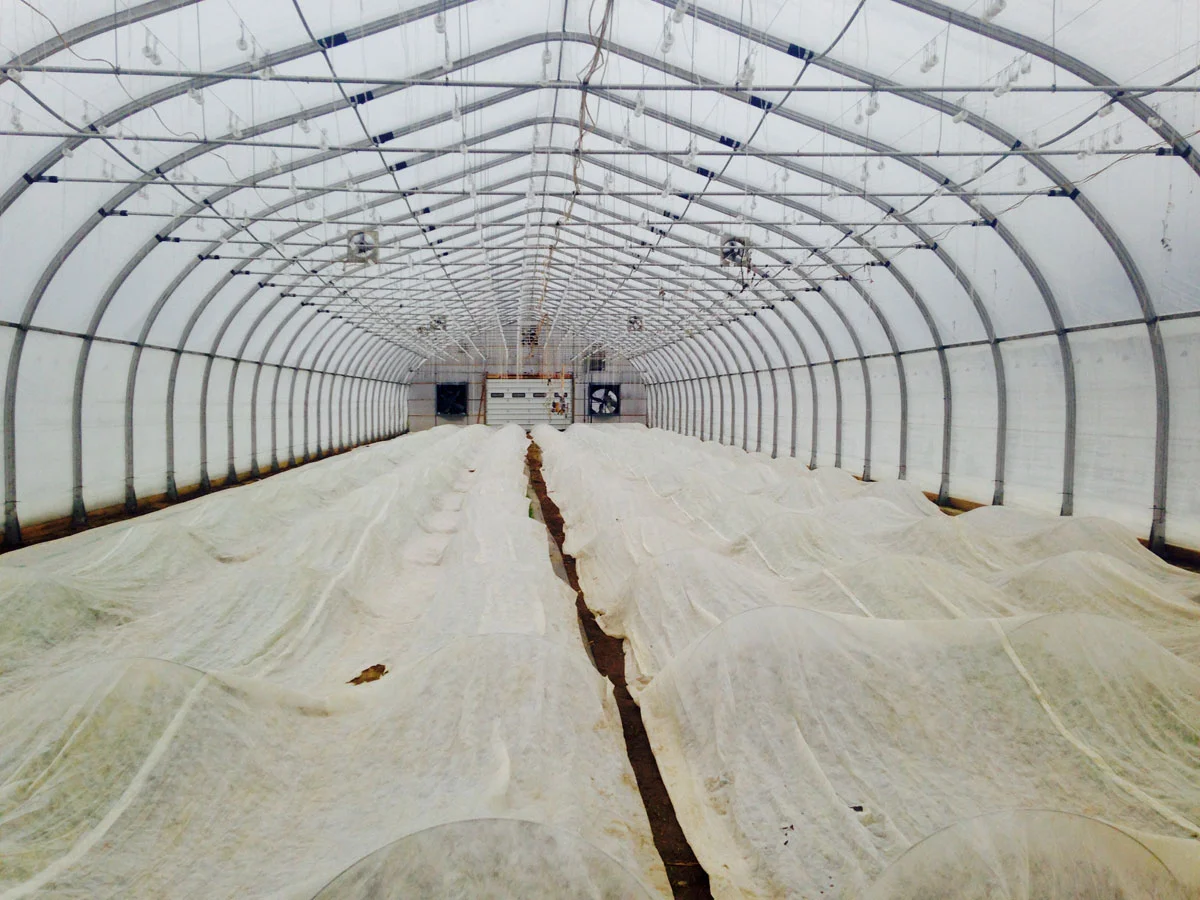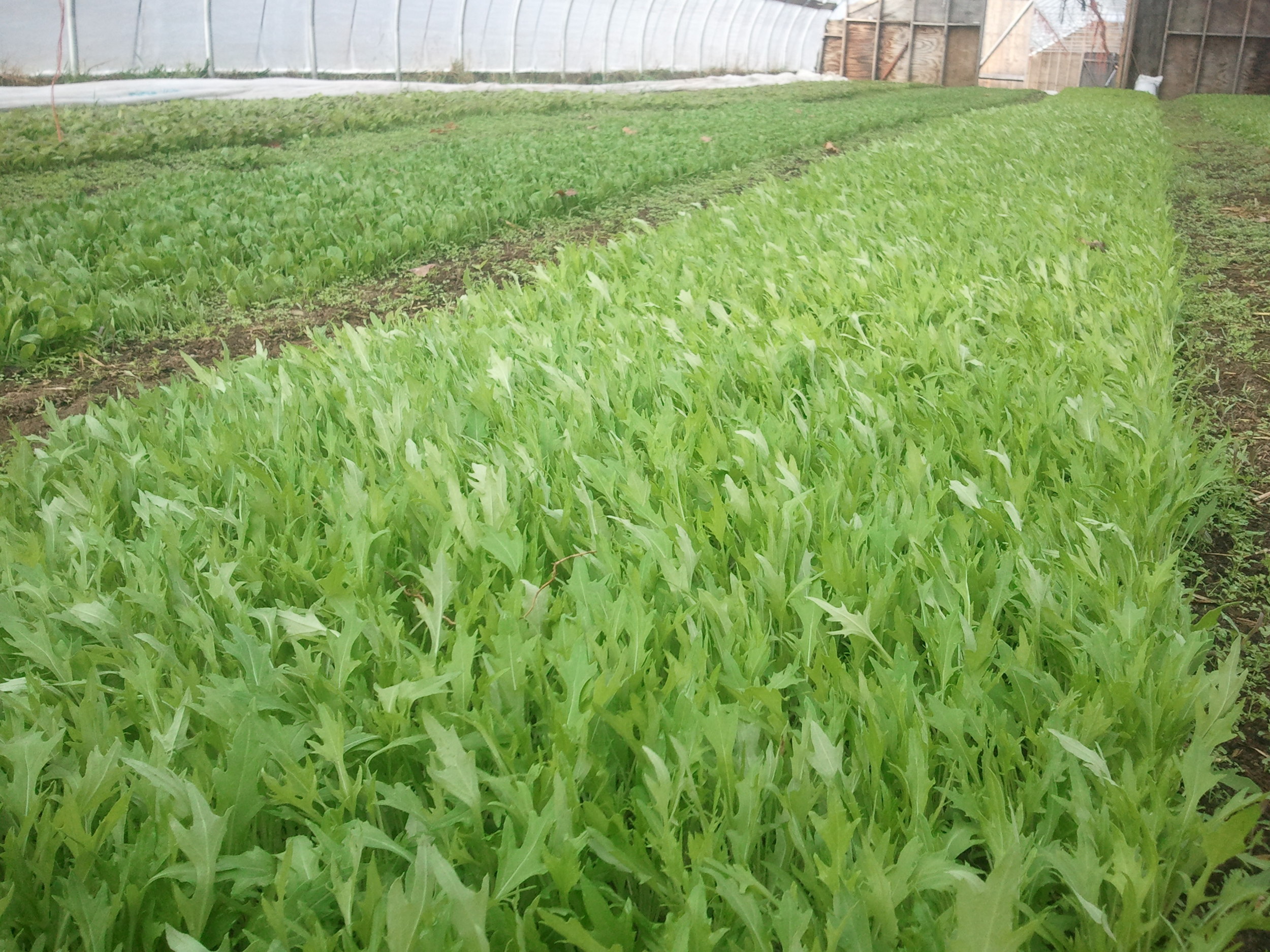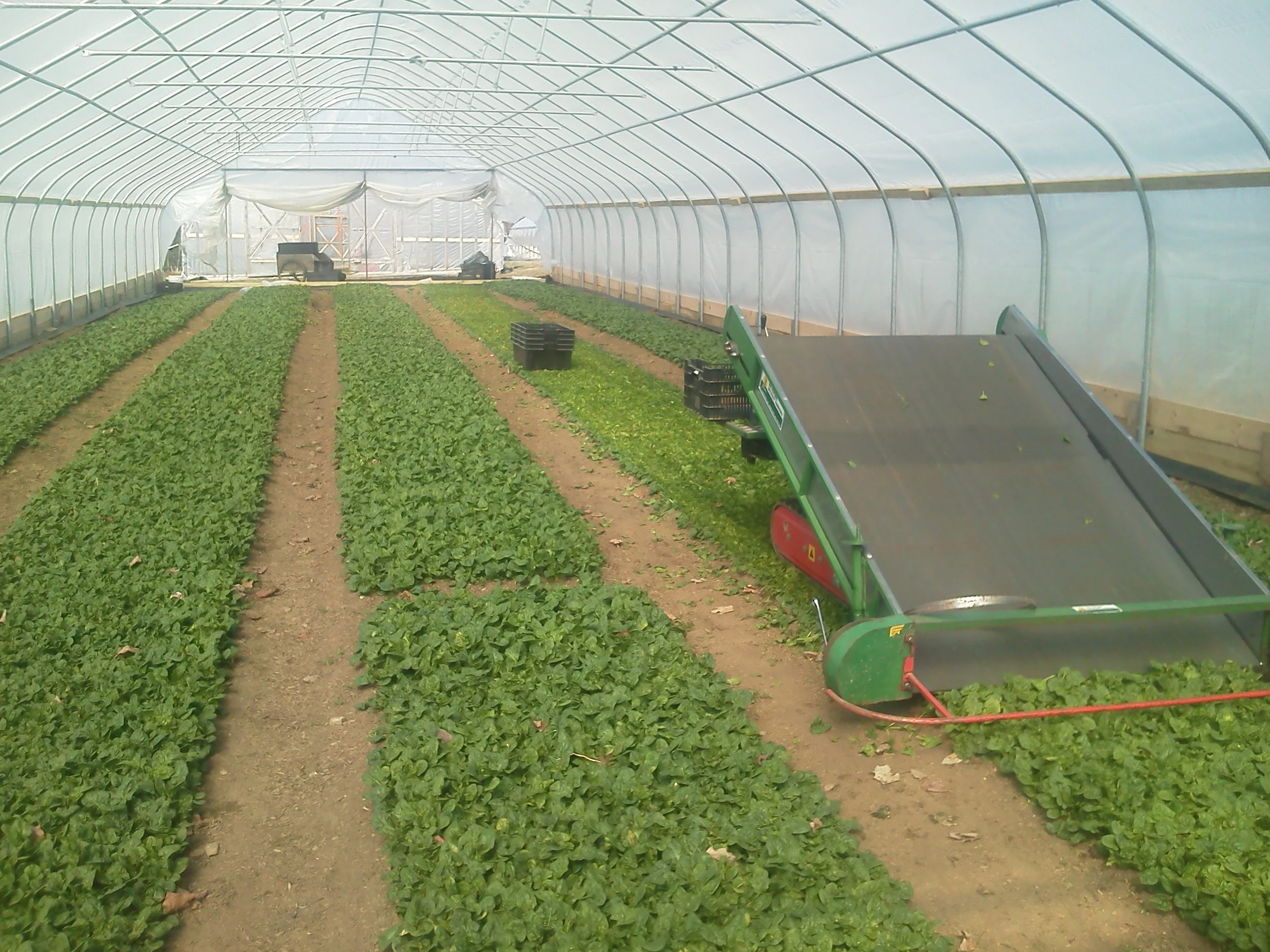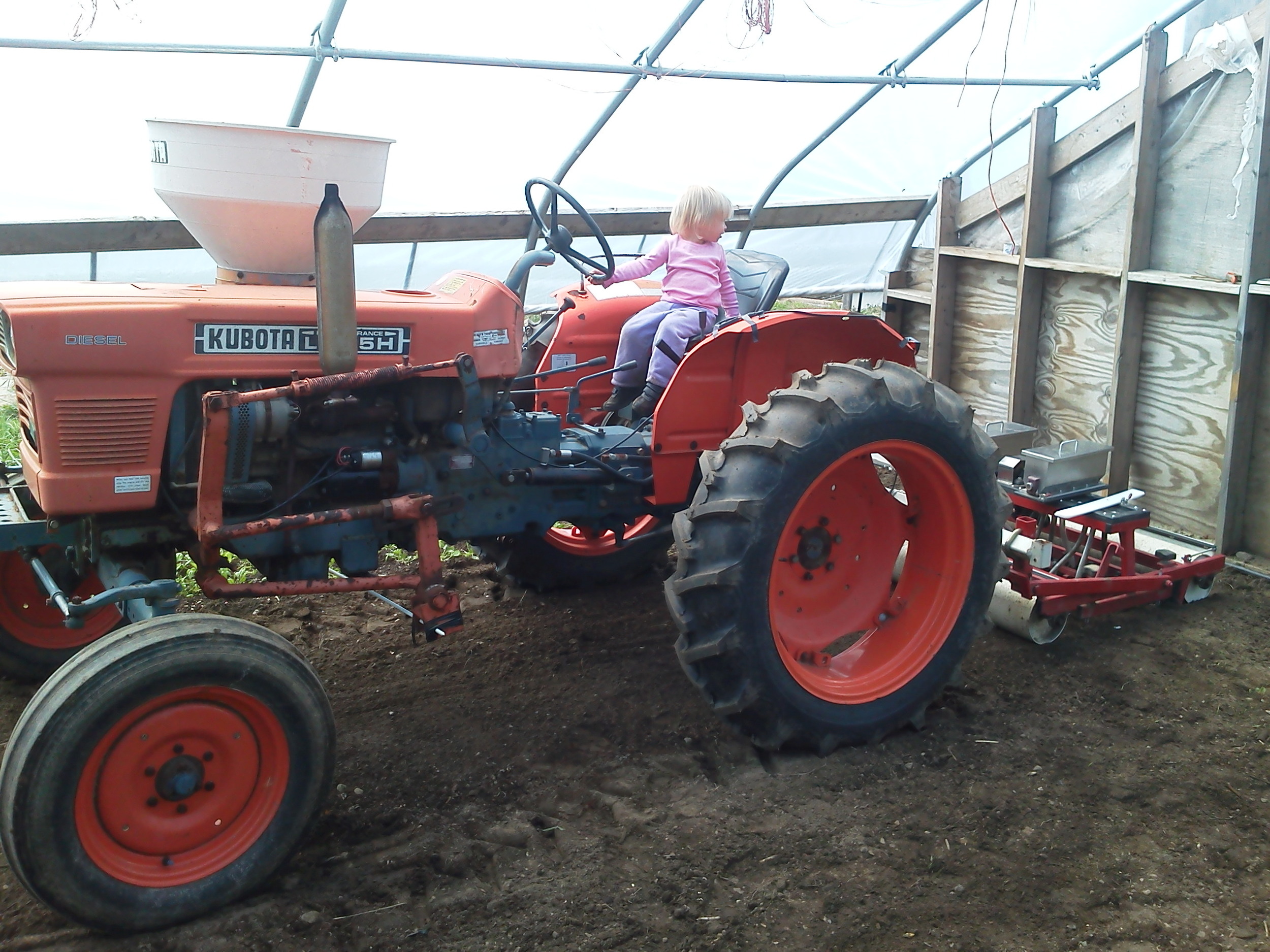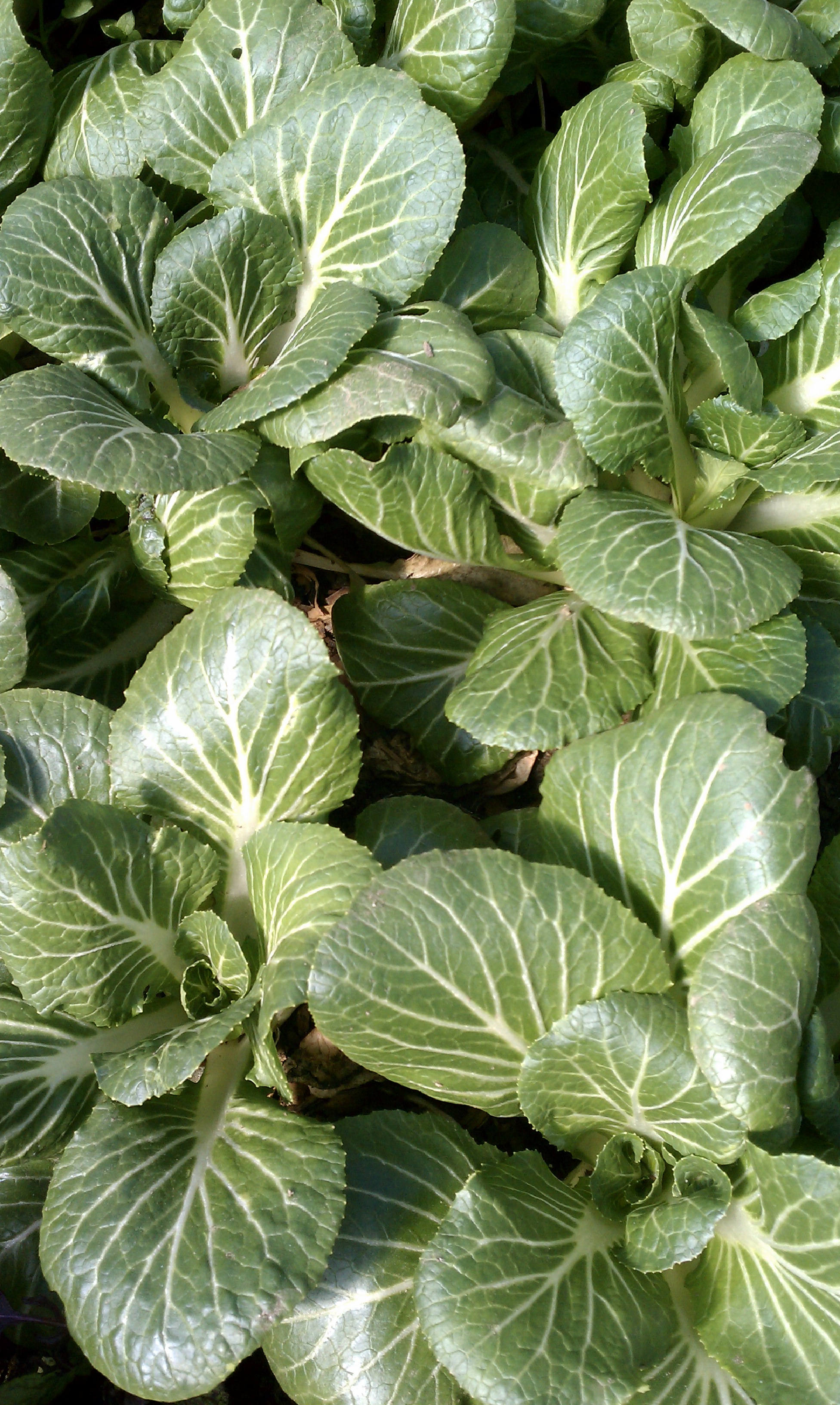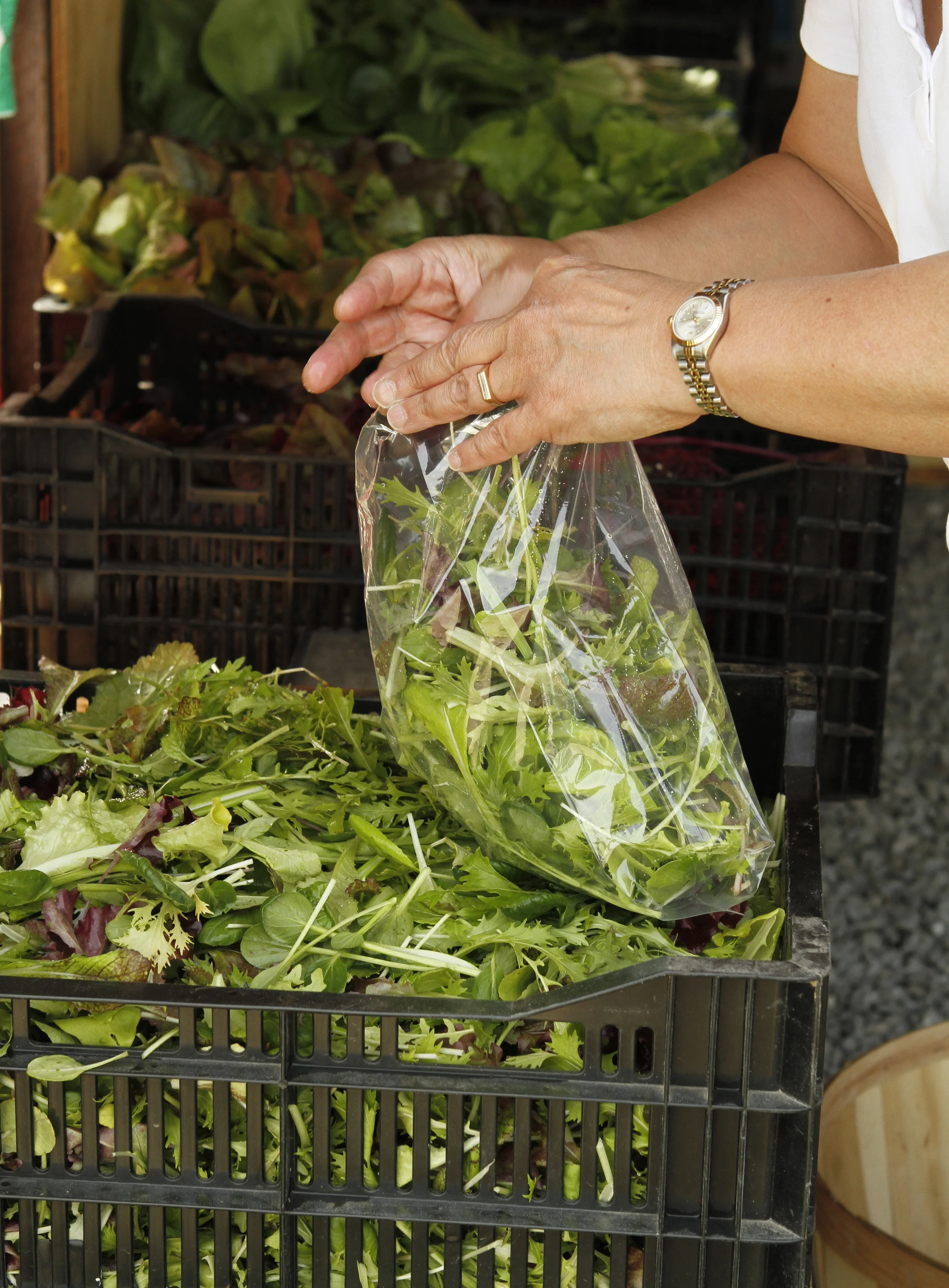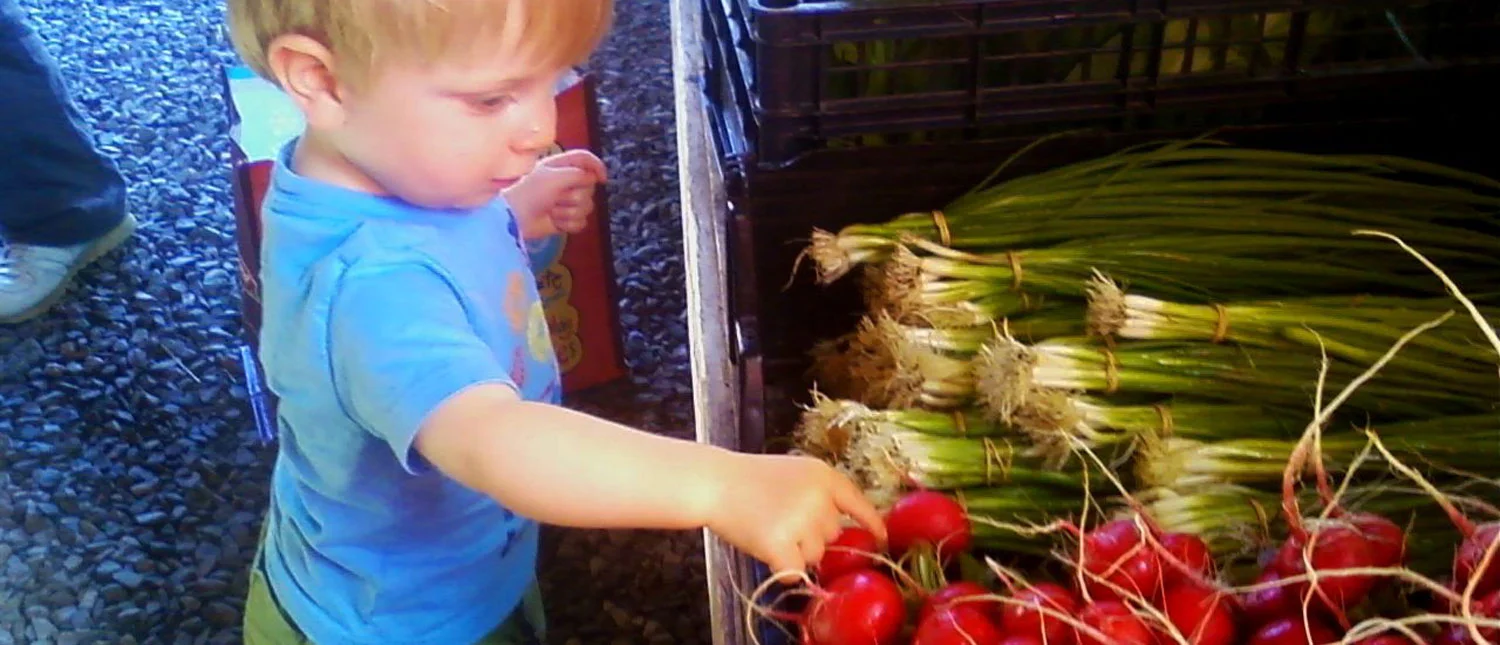From our commitment to animal husbandry to our on-farm cookouts, we at JSF invite you to be a part of our farm community.
Viewing entries in
Farm Philosophy
What's wrong with aphids? They feed on and stress leafy plants like tomatoes, spinach, and zucchini. Their feeding weakens the plants and makes it difficult for the plants to produce well all season long.
Last August we presented a blog post about the UVM Entomology Research Lab's on-farm investigation into whether “habitat plants” can sustain predatory insect populations to assist in keeping the aphid population low in our hoophouses. We planted habitat plants at intervals among the tomato plants in one of our heated hoophouses. Each type of habitat plant had a purpose of either providing food, shelter, or reproductive sites for beneficial predatory insects.
Read the full blog for fascinating detail about the types of pests and predatory insects we catalogued last year.
We establish habitat plants consisting of beans, alyssum, borage, marigolds and dill. Last year we found that borage, alyssum and dill attracted the highest diversity of insects, including pests. These pests in turn attracted beneficial insects which preyed on the pests and relied on the habitat plants to host a consistent food source for the season. Once in the hoophouse the predatory insects move throughout the plants, finding and preying on aphids throughout the hoophouse crops, thus helping to keep pests such as aphids at tolerable levels for the plants. Already this season Hannah has seen a good volume and diversity of predatory insects present to help control the aphids.
Juliette, our Greenhouse Manager, with a newly seeded "banker plant" before it was transplanted into hoophouse
In a second hoophouse we are trying another method of aphid control. We transplant a succession of “banker plants”, which are bunches of winter wheat grass purposefully "infected" with a type of aphid that is tasty to predatory insects but that does not feed on tomatoes or other vegetable crops (it feeds specifically on wheat grass and a few related plants). The purpose of the banker plant is to sustain the "good aphids" so they can be a consistent food source for predatory insects that feed on all types of aphids. This way when the bad aphids show up in the hoophouse to feed on the tomato leaves, there is an established predatory insect population that preys on and controls the aphids.
Why go through the trouble? We want to grow vigorous, healthy tomato plants and other crops in our hoophouses all season long without having to rely on chemical controls that can be unhealthy for us, for you, and for the many good insects and small animals that inhabit our farm. Plus it's simply amazing to learn about and watch all the different insects!
Many of our CSA members have been telling us how excited they are to have so many greens this time of year! We have been expanding our winter growing operation, and every year we are able to provide more variety of crops for a longer period of time. So how do we do it?
It all starts with careful planning in August, when we seed the transplants that we will eventually plant into the hoophouses in fall. When we finally pull our tomato plants from their indoor homes in September, we then fill the hoophouses with new transplants and seeds that will turn into crops such as mesclun, arugula, pac choi, spinach, kale, lettuce, chard and more. We allow our plants to grow until they are well-established, despite the waning daylength of fall. The short days and cool nights facilitate slow growth, but enough growth to secure a foundation of strong roots and rugged greens. The slow plant cell growth during the winter is responsible for the unbelievable sweetness and hardiness of winter-grown greens.
During the winter we cover our crops with “remay”, which is a long sheet of breathable fabric that is also penetrable by light. Remay prevents frost from touching the leaves, and increases the temperature of the soil beneath its cover. The hoophouses themselves get very warm when it is sunny, so we pull the fabric off during the day, and tuck the plants back in at night. This year we were able to over-winter spinach, kale, braising greens, chard, pac choi, tatsoi, green onions, and green garlic. You might think that was only because this winter was so mild, but we overwintered all these same crops last winter too when it was significantly colder.
When Spring arrives, and the days lengthen, the greens start growing rapidly. We harvest them either by hand, or with our walk-behind harvester, which allows us to harvest hundreds of pounds of salad greens per hour. We then bring the greens into our wash-pack area, where we double wash and sanitize them and spin them dry in a giant 50 gallon salad spinner. From there we put them into in our large walk-in coolers to cool them before sale.
We distribute our greens to our CSA members, our Farmstand, the Burlington Farmers Market, and numerous restaurants, groceries, hospitals and schools within 30 miles of the farm. We have nine hoophouses with nearly 40,000 square feet of growing space, allowing us to grow nearly 10000 pounds of salad greens between November and March.
It’s easy to take the abundance of luscious greens coming out of the field for granted during the summer, but where do they come from this time of year? The answer is high tunnels. High tunnels are basically greenhouses in which we grow plants directly in the soil. The steel frames are covered with one or two layers of thick plastic and are warmed by passive solar heating. Two of our newest high tunnels here at Jericho Settlers Farm also have in-ground heat supplied by a biomass furnace to keep the greens happy during the coldest winter months. We have nine high tunnels at JSF and thanks to them we can grow fresh salad greens for you all winter here in Vermont.
A lot of farming has to do with timing, and seeding in high tunnels is no exception. During the summer months greens are ready to harvest roughly 20 days from seeding. But when the days start to shorten it can take up to 40 days or more to reach maturity. Seeding just a few days late can make a huge difference in the number of harvests we yield. We seed our high tunnels in late September and early October when there are still more than 10 hours of daylight for optimal germination and plant growth.
Two other important factors involved in winter growing are temperature and moisture. Both need to be monitored closely throughout the winter to ensure that the greens ending up in your salad are fresh and healthy. The plastic that covers our houses helps to trap heat from the sun, which warms the ground and aids plant growth. If it’s warm enough, we open the doors and roll up the sides of the house, which allows for airflow through the houses. On a sunny November day when it's 25 F outside it can be well over 50 F inside a high tunnel if we don't ventilate them. Keeping the plants cool (but not frozen) in the early winter helps them to harden off and be ready for deep winter, plus ventilating prevents dangerous moisture build up in the high tunnels - a precursor to fungal growth which can ruin a crop of winter greens. As the evening approaches and temperatures drop we close up the tunnels and use a lightweight cloth cover, called remay, to blanket over the vulnerable plants. By covering the salad greens and other veggies in our high tunnels we are able to trap heat from the day closer to the ground around the plants. In the morning, we're back out there again to remove the remay, ventilate the crops, and allow the sunlight to penetrate through the house to reheat the ground. Then we recover the crops in the afternoon and do it all over again the next day.
Come late December however, the combination of below freezing temperatures and short day length halts most plant growth. By this time we have harvested most of the salad greens in the unheated high tunnels and they will not regrow again until the longer sunny days of February come around. So this is when our new in-ground heated tunnel comes into real action! By maintaining minimal ground heat (with a biomass furnace) that keeps the plants just above freezing the plants are able to continue a small amount of growth even during the shortest coldest days of winter. This allows us to continue to harvest fresh salad greens through January and February.
We enjoy the change in work and growing challenges that comes along with growing during all the different seasons, even the snowy one!
Tomatoes Growing in our New Hoophouse!
At Jericho Settlers Farm we are committed to year-round growing of fresh organic vegetables for your table. This means we have a lot of hoophouses, most of which are unheated, to grow salad greens during the winter and to coddle our tomato plants during the summer. Still, without a heat source we really can't push the tomato envelope too far, especially in a cold spring like this one. So this past season we invested in a larger hoohouse that is well-insulated and holds a lot of solar heat due to its shear size. In addition we installed a biomass furnace that burns wood pellets or corn to heat water, which is pumped into in-ground lines to heat the soil in the hoophouse. This allows us to start growing tomatoes at the end of March, with anticipated harvest in June. This project is particularly exciting for us because it came to fruition with the help of several great partners, including The Farmhouse Group, Vermont's Working Lands Enterprise initiative and Efficiency Vermont. It's a cool private/public partnership to bring Vermont closer to feeding itself, no matter the weather!
It takes more than some added heat to grow early tomatoes. It also takes bumble bees. We have a hive of these handy pollinators living right in the hoophouse, so they can pollinate the early tomato flowers in April, when the native outside bees are still hibernating. Bumble bees are particularly good at pollinating tomatoes. The tomato flower needs a lot of buzzing to vibrate the pollen off the anthers and onto the stigma inside the flower to achieve fertilization and fruit development. We love working alongside the bees in the tomato crop.
Bumblebees pollinating the early tomato crop at Jericho Settlers Farm.
You have probably read ten different versions of the top ten reasons to buy organic food. But you haven’t read our list yet, and instead of telling you why you should buy organic we want to let you know five reasons why we choose to grow organically. We grow all the vegetables, herbs, and flowers on our farm organically and are certified by Vermont Organic Farmers, a certification agency that ensures that organic producers are following the National Organic Standards. So why do we grow organically?
- We believe that growing organically is
an obligation, not a choice.
Growing organically means taking care of the soil, not just the crops,
and utilizing ecological principals to produce strong plants that can resist
pests and diseases. We intend for
the land we farm and the water sources we utilize to be suitable for growing
food long after our time on this planet is over.
- We don’t want to put on hazmat suits
and respirators to apply chemicals to our crops for controlling plants diseases
and insect pests. We don’t want our employees to have to
do this either. By growing organically, toxic chemicals are not necessary to
grow quality vegetables, herbs and flowers. We can suppress insect pests and plant diseases through crop
rotation, timing of crop planting, physical barriers (such as row covers), and
managing the soil for plant health such that the plants can fight off diseases
and insect pests with their own natural defenses. To do this we have to learn about and pay attention to the
needs of each crop, the needs of the soil, pest and disease life cycles,
weather patterns and seasonal pest migrations. We need to test our soil for crop nutrient needs, monitor
for pests, and plan our production such that if a pest or disease does damage a
crop the farm’s production as a whole does not suffer.
- We want to eat fresh tasty vegetables
right out of the field. Often I have heard a concerned parent say to their young
child, who is about to pop a cherry tomato into her mouth, “wait, we need to
wash that first”. Well, in our
opinion eating a cherry tomato right off the plant is the best way to eat a
cherry tomato. So by growing
organically we don’t have to worry about pesticide residues on the plants,
heavy metal build up in the soil, or raw manure contamination of crops. We do not use toxic pesticides, we do
not apply fertilizers (such as sewage sludge) that can contain heavy metals,
and we follow strict composting protocols and waiting periods for use of manure
as a fertilizer in our fields. We eat vegetables all day long as we work,
nibbling beans as we pick them, wiping the soil off a freshly pulled carrot and
crunching away, getting a sugar hit from sweet cherry tomatoes warmed by the
afternoon sun.
- We love watching the life, both the big
and the nearly microscopic, that lives in and around our farm. Well, of course we
don’t like watching the deer eat the lettuce, but the fox eating the vole, the snake
eating the mouse, the toad eating the slug, the soldier beetle eating the
potato beetle: these are all fascinating to observe, and more so these
relationships are essential in our “agricultural ecosystem” to keep “pest”
populations in balance.
- We’re cheap and don’t want to buy a lot of
expensive fossil-fuel based chemicals to feed and protect our crops. That’s why we use cover crops! A cover
crop is a grain and/or legume crop planted to cover soil when it is not being
used to grow vegetables. Cover
crops are essential in maintaining soil fertility and tilth, reducing weed
pressure, and preventing soil erosion. They can be planted any time of year and
harvested and/or tilled into the soil at different times depending on what our
goal(s) is for the field. For
example, we plant winter rye and vetch on many of our fields after we remove
the last vegetable crop from the field in the fall. We allow the vetch and rye to grow on the fields through the
winter into the next spring. Its
fibrous root system helps to hold the soil together and prevent erosion and its
growth is a way of storing any remaining nitrogen in the soil. In addition, vetch roots can actually
“fix” nitrogen from the air in the soil into a useable form that plants can use. Rather than leaching out, nitrogen is
stored in the tissue of the cover crop, and then when we till in the crop in
the spring it’s just like adding truckloads of compost to the soil. Hence the
other name for cover crops – green manure.
The amount of fossil fuels used to grow food in the U.S. industrial food system is staggering. Much of this fossil fuel use is in the form of fertilizers (natural gas) and herbicides (petroleum). Neither of these types of products are used in organic vegetable production. Learn more about it here: http://michaelpollan.com/articles-archive/farmer-in-chief/
As farmers our intent is to provide you with real, wholesome food to nourish your body and mind. Our aim is to share with you all we know about growing food and taking care of the land. We love to grow food for you; and we love to answer your questions if you want to venture into growing your own food. What is better than to be your own farmer! But of course, we don’t all have the land or time to grow all our own food and keep up with the many other aspects of life. Which is why having farmers in our community is so essential. Having locally grown food in our community is essential. Having fresh, nutritious, wholesome, real food to eat is essential. Plant a seed, know your farmers, know your food.













